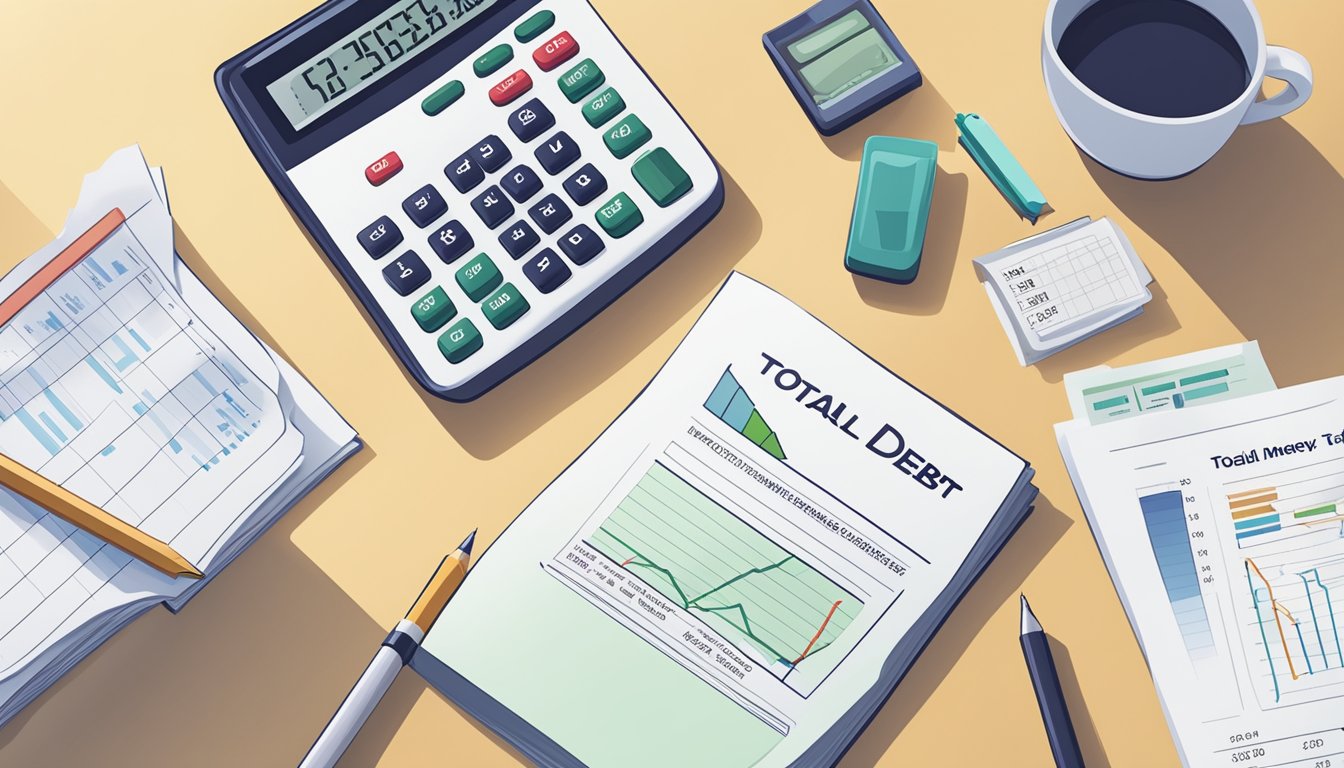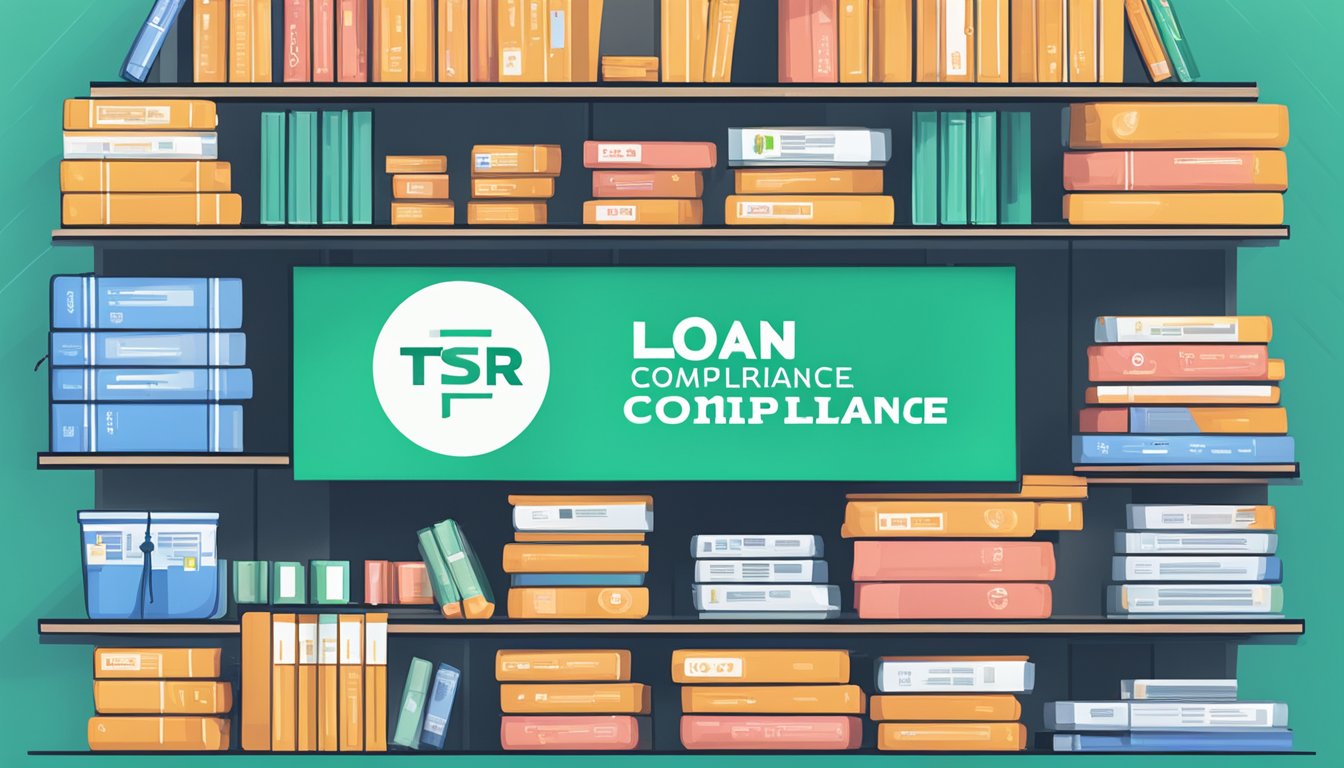Are you looking for a reliable money lender in Singapore? With so many options available, finding a lender that meets your needs can be challenging. One factor to consider when choosing a lender is their Total Debt Servicing Ratio (TDSR), which measures your ability to repay loans based on your income.

The TDSR is an essential factor when applying for loans in Singapore, as it helps lenders determine whether you can afford to repay your debts. A TDSR of 60% means you cannot spend more than 60% of your monthly income on loan repayments, including your mortgage and other debts. This helps ensure that you do not take on more debt than you can afford to repay.
So, which money lenders have the best TDSR in Singapore? In this article, we will take a closer look at some of the top money lenders in Singapore and their TDSR requirements. Whether you are looking for a personal loan, a mortgage, or other financing options, we have you covered. With the right lender and a good understanding of your TDSR, you can take control of your finances and achieve your goals.
1 Minute Read: Lower Debt with Singapore’s Best Money Lender TDSR!
Borrowers, if you’re after quick facts about the “Best Money Lender TDSR in Singapore,” you’re in the right spot! Let’s dive into critical details about how to say goodbye to high debt with a trustworthy authorised money lender in Singapore.
What You Need to Know:
- Understanding TDSR: TDSR, or Total Debt Servicing Ratio, is vital for anyone seeking loans in Singapore. It’s a way to see how much of your income is used to pay off debts like loans and credit cards.
- Why TDSR Matters: The government introduced TDSR to help people avoid borrowing too much and getting into financial trouble. It’s a way to ensure you don’t take on more debt than you can handle.
- Singapore’s Best Money Lender TDSR: Look for authorised money lenders who follow the rules and care about your financial health. These good lenders pay attention to your TDSR to offer loans that suit you.
- Get Excited for Lower Debt: By choosing the best money lender with a good TDSR approach, you can look forward to managing your debts better. They might offer lower interest rates, flexible repayment plans, and advice tailored to your needs.
- Ask for Help: Don’t hesitate to ask authorised money lenders for advice. They can help you understand your TDSR better, combine your debts into manageable payments, and improve your financial situation.
Now that you know the basics of dealing with TDSR with Singapore’s best money lender, you’re on your way to less debt and better finances. But remember, there’s always more to learn about managing your money wisely. Keep an eye out for more tips and tricks below to help you take control of your financial future!
Best Money Lender TDSR in Singapore: Understanding Total Debt Servicing Ratio (TDSR)

If you’re looking to borrow money from a money lender in Singapore, you’ll need to understand the Total Debt Servicing Ratio (TDSR). TDSR is a framework introduced by the Monetary Authority of Singapore (MAS) to ensure that people borrow money responsibly and are not over-leveraged.
Fundamentals of TDSR
TDSR is a measure of your ability to repay your debts. It considers your monthly debt obligations, including your home loan (mortgage) and other liabilities like credit card debt and personal loans. The TDSR limit is 60% of your gross monthly income.
However, for business owners or people who derive a significant portion of their income from commissions, your TDSR is calculated based on a 30% reduction of your gross monthly income.
Calculating Your TDSR
To calculate your TDSR, you must add up all of your monthly debt obligations and divide that by your gross monthly income. If your TDSR exceeds the limit set by MAS, you may not be eligible to borrow money from a money lender in Singapore.
Here’s an example of how to calculate your TDSR:
| Monthly Income | Gross Monthly Income |
|---|---|
| Salary | $4,000 |
| Rental Income | $1,000 |
| Total Monthly Income | $5,000 |
| Monthly Debt Obligations | Amount |
|---|---|
| Home Loan | $1,500 |
| Car Loan | $500 |
| Credit Card Debt | $300 |
| Total Monthly Debt Obligations | $2,300 |
TDSR = Total Monthly Debt Obligations / Gross Monthly Income x 100%
TDSR = $2,300 / $5,000 x 100% = 46%
In this example, the TDSR is 46%, below the current TDSR limit set by MAS.
Impact of TDSR on Borrowers
The TDSR limit has a significant impact on borrowers. If your TDSR exceeds the limit set by MAS, you may not be eligible to borrow money from a money lender in Singapore. MAS wants to ensure you have enough income to cover your monthly debt obligations and still have enough money left over for your daily expenses.
It’s important to note that TDSR is not the only factor money lenders in Singapore consider when deciding whether to lend you money. They will also look at your credit history, employment status, and other factors to determine whether you are a good candidate for a loan.
In conclusion, understanding TDSR is crucial to borrow money from a money lender in Singapore. By calculating your TDSR and ensuring that it is below the limit set by MAS, you can increase your chances of being approved for a loan.
Best Money Lender TDSR in Singapore: Top LMLs for TDSR Loans in Singapore

When finding the best money lenders for TDSR loans in Singapore, you have various options. Here are some key aspects to keep in mind when exploring your choices.
Banks and Financial Institutions
Many banks and financial institutions in Singapore offer TDSR loans, providing competitive interest rates and flexible repayment terms. Some well-known entities offer valuable insights into TDSR and its impact on loan repayments.
Comparing Loan Offers
Before committing to a TDSR loan, comparing the offers from different lenders is essential. Look for transparent terms, low processing fees, and favourable interest rates. Additionally, consider licensed moneylenders, which offer a range of loan options tailored to your needs.
By carefully evaluating the options available, you can make an informed decision and choose the best money lender for your TDSR loan in Singapore.
Best Money Lender TDSR in Singapore: Loan Products and TDSR Compliance

When borrowing money in Singapore, you must know the Total Debt Servicing Ratio (TDSR) rules. These rules were introduced by the Monetary Authority of Singapore (MAS) in 2013 to ensure that borrowers do not overextend themselves financially.
TDSR limits the amount of debt you can take on to 60% of your gross monthly income, including all loan payments and other debt obligations.
Housing Loans and TDSR
If you want to buy a home in Singapore, you must comply with the TDSR rules. This means that your monthly housing loan payments and any other debt obligations cannot exceed 60% of your gross monthly income. To calculate your TDSR, lenders will consider your income, your existing debts, and the loan amount you are applying for.
Refinancing Under TDSR Rules
If you already have a housing loan and are looking to refinance, you must comply with the TDSR rules. This means that your new monthly housing loan payments and any other debt obligations cannot exceed 60% of your gross monthly income.
You may also be subject to additional fees when refinancing, so it is essential to research and compare lenders.
Other Loan Types Affected by TDSR
TDSR rules apply to other types of loans, such as car, personal, and investment property loans. This means that your monthly loan payments and any other debt obligations cannot exceed 60% of your gross monthly income.
When applying for these types of loans, you must provide accurate information about your income and existing debts to ensure you can comply with the TDSR rules.
Overall, TDSR rules are designed to help borrowers avoid overextending themselves financially. By limiting the amount of debt you can take on, TDSR rules can help you make more informed borrowing decisions and reduce your risk of defaulting on your loans. When applying for a loan, it is important to work with a lender who understands TDSR rules and can help you navigate the borrowing process.
Tip: Understanding TDSR
The TDSR limits your total debt to 60% of your monthly income, including loan payments and other debts.
Calculate your TDSR before applying for any loan. Add up your debts and the new loan payments to see if you’re within the limit.
This helps you make smart borrowing decisions and sail smoothly through the loan process.
Best Money Lender TDSR in Singapore: TDSR Exemptions and Special Cases

If you are self-employed or earn a variable income, calculating your TDSR can be more complicated than for those on a fixed salary. However, you can still obtain a loan as long as you meet the lender’s requirements.
TDSR for Self-Employed and Variable Income Earners
If you are self-employed or earn a variable income, lenders will typically look at your average monthly income over the past 12 months to determine your TDSR. This is to ensure that you have a stable income and can afford to repay your loan.
To calculate your TDSR, you will need to provide your lender with your Notice of Assessment (NOA) from the Inland Revenue Authority of Singapore (IRAS). Your NOA will show your average monthly income over the past 12 months, which your lender will use to determine your TDSR.
Exemptions and Relaxation of TDSR Measures
While the TDSR framework is designed to ensure that borrowers do not overextend themselves financially, there are exemptions and relaxation measures in place to help certain individuals and situations.
For instance, if you are a property investor, your rental income can be used to offset your debt obligations when calculating your TDSR. This means that you may be able to borrow more than the standard 60% TDSR limit.
Additionally, if you are refinancing your existing property loan, you may be exempted from the TDSR framework if you meet certain criteria. For example, if your loan was approved before the TDSR framework was introduced, you may be exempted from the TDSR limit.
It is important to note that exemptions and relaxation measures are subject to the lender’s discretion and approval. Therefore, it is always best to consult with a licensed money lender to understand your options and eligibility.
Overall, while the TDSR framework may seem restrictive, it is designed to ensure that borrowers do not overextend themselves financially. By understanding the TDSR framework and exemptions, you can make informed decisions when it comes to borrowing money.
Best Money Lender TDSR in Singapore: Strategies for Managing and Improving TDSR

If you are struggling to meet your Total Debt Servicing Ratio (TDSR) requirements, there are several strategies you can use to manage and improve your TDSR. Here are some effective strategies that you can use:
Debt Reduction and Restructuring
One of the most effective ways to improve your TDSR is to reduce your debt obligations. You can do this by creating a debt reduction plan that prioritises paying off high-interest debt first. You can also consider debt restructuring, which involves consolidating your debts into a single loan with a lower interest rate.
Maximising Loan Tenure
Another strategy to improve your TDSR is to maximise your loan tenure. This means that you should opt for longer loan tenures when applying for loans. Longer loan tenures will lower your monthly repayments, which will help you meet your TDSR requirements. However, keep in mind that longer loan tenures also mean that you will pay more in interest over time.
Leveraging Financial Assets
You can also leverage your financial assets to improve your TDSR. For example, you can use your savings to pay off outstanding debt or make a larger down payment on a property. This will reduce your debt obligations and improve your TDSR. You can also consider using your existing investments or assets as collateral to secure a loan with a lower interest rate.
By implementing these strategies, you can effectively manage and improve your TDSR. Keep in mind that improving your TDSR requires discipline and commitment, but the rewards can be significant. With a little effort, you can reduce your debt obligations, maximise your loan tenure, and leverage your financial assets to achieve your financial goals.
Best Money Lender TDSR in Singapore: Government Policies and TDSR Implications

As a borrower, it is important to understand the government policies that affect your loan eligibility. The Monetary Authority of Singapore (MAS) introduced the Total Debt Servicing Ratio (TDSR) framework in 2013 to encourage responsible borrowing and reduce the risk of defaults in the property market.
MAS and Cooling Measures
The MAS has implemented various cooling measures to ensure that the property market remains stable. One of these measures is the TDSR, which limits the amount of debt a borrower can take on. This is calculated by taking into account all of your monthly debt obligations, including your home loan, car loan, and credit card debt. Your TDSR should be less than or equal to 60% of your gross monthly income.
The TDSR framework has been effective in reducing the risk of defaults in the property market. It has also helped to ensure that borrowers do not take on more debt than they can handle. As a result, banks are more cautious when approving loans, and borrowers are more aware of their financial obligations.
Property Market Trends and TDSR
The TDSR framework has had a significant impact on the property market in Singapore. Since its introduction, property prices have remained stable, and the risk of defaults has decreased. However, the TDSR framework has also made it more difficult for some borrowers to obtain loans, especially those with high levels of debt.
It is important to keep in mind that the TDSR framework is just one of many factors that affect the property market. Other factors include interest rates, economic conditions, and government policies. It is important to stay informed about these factors to make informed decisions about your borrowing and investment strategies.
In conclusion, the TDSR framework has had a positive impact on the property market in Singapore. It has helped to reduce the risk of defaults and encourage responsible borrowing. However, it is important to understand the implications of the TDSR framework and other government policies when making financial decisions.
Best Money Lender TDSR in Singapore: Navigating TDSR for Property Investment

Are you a property investor looking to take out an investment property loan in Singapore? If so, you need to be aware of the Total Debt Servicing Ratio (TDSR) limits that apply to all property loans in Singapore.
Investment Loans and TDSR Limits
When taking out an investment property loan, you need to be mindful of the TDSR limits. The TDSR is a framework introduced by the Monetary Authority of Singapore (MAS) to ensure that borrowers are not over-leveraged and can manage their debt responsibly. The TDSR limits the amount you can borrow based on your income and other financial obligations.
The TDSR limits for investment property loans are the same as those for residential property loans. You must maintain a TDSR of 60% or lower, which means that your monthly debt repayments cannot exceed 60% of your gross monthly income. This includes all your outstanding debts, including credit card debts, car loans, and other personal loans.
Balancing Investment and TDSR
When investing in property, it’s important to strike a balance between your investment goals and your TDSR limits. While you may be tempted to borrow as much as possible to maximise your returns, you need to be mindful of your ability to service your debts.
To balance your investment goals and TDSR limits, you should consider the following:
- Choose your investment property wisely: Look for properties that are likely to appreciate in value over time and generate steady rental income. This will help you maximise your returns while keeping your debt levels manageable.
- Keep your debts under control: Avoid taking on too much debt and make sure you can comfortably service your existing debts before taking on new ones.
- Consider refinancing: If you have existing debts with high interest rates, consider refinancing to lower your monthly repayments and improve your TDSR.
- Work with a reputable money lender: Look for a money lender who specialises in investment property loans and understands the TDSR limits. They can help you navigate the loan application process and ensure that you are not over-leveraged.
In conclusion, navigating TDSR for property investment in Singapore can be challenging, but it’s essential to ensure that you are not over-leveraged and can manage your debts responsibly. By choosing your investment property wisely, keeping your debts under control, considering refinancing, and working with a reputable money lender, you can balance your investment goals and TDSR limits and achieve success as a property investor.
Best Money Lender TDSR in Singapore: Tools and Resources for TDSR Planning

If you’re a Singaporean looking to take out a loan, it’s important to practice financial prudence and ensure that you can comfortably make your loan repayments. The Total Debt Servicing Ratio (TDSR) is a key metric that lenders use to determine whether you can afford to take out a loan. Fortunately, there are several tools and resources available to help you plan for TDSR and make informed decisions about your finances.
TDSR Calculators and How to Use Them
One of the most useful tools available for TDSR planning is a TDSR calculator. These calculators allow you to input your income, expenses, and other financial information to determine your TDSR. This can help you determine how much you can afford to borrow and ensure that you stay within your means.
There are several TDSR calculators available online. To use a TDSR calculator, you’ll need to gather information about your income, expenses, and debt obligations. This might include your monthly salary, any rental income you receive, your monthly debt repayments, and other expenses like groceries and transportation.
Once you’ve inputted this information into the TDSR calculator, you’ll receive a TDSR percentage. This percentage represents the maximum amount of your income that should go towards debt repayments. If your TDSR is too high, you may need to reconsider your borrowing options or adjust your expenses to ensure that you can comfortably make your loan repayments.
Professional Advice and Consultation
If you’re unsure about how to plan for TDSR or need help understanding your financial situation, it can be helpful to seek professional advice and consultation. Financial advisors and loan officers can provide you with personalised guidance and help you make informed decisions about your finances.
When seeking professional advice, it’s important to choose a reputable and trustworthy provider. Look for advisors who are licensed and experienced in providing financial guidance to Singaporeans. You may also want to consider seeking advice from multiple providers to get a range of perspectives and opinions.
Overall, planning for TDSR is an important part of responsible borrowing. By using tools like TDSR calculators and seeking professional advice when necessary, you can ensure that you make informed decisions about your finances and avoid taking on debt that you can’t afford to repay.
Frequently Asked Questions
How can you calculate your TDSR to maximise your property loan in Singapore?
Calculating your Total Debt Servicing Ratio (TDSR) is a crucial step in securing a property loan in Singapore. To calculate your TDSR, you need to add up all your monthly debt obligations, including credit card payments, car loans, and other personal loans. Then, you need to divide the total by your gross monthly income. The resulting percentage is your TDSR.
To maximise your property loan in Singapore, you need to ensure that your TDSR falls within the acceptable limit set by the Monetary Authority of Singapore (MAS). Currently, the TDSR threshold is 60%. You can use an online TDSR calculator to help you determine your maximum loan potential.
What’s the most delightful way to find the best home loan rates based on TDSR?
Finding the best home loan rates based on TDSR can be a daunting task. However, you can make it easier by using a mortgage broker or comparison website. These platforms allow you to compare different home loan rates and select the one that suits your financial situation and TDSR.
It’s important to note that the lowest interest rates may not always be the best option for you. You need to consider other factors such as loan tenure, lock-in period, and processing fees before making a decision.
Could you enlighten me on the current TDSR threshold for property loans in Singapore?
The current TDSR threshold for property loans in Singapore is 60%. This means that your total monthly debt obligations, including your home loan, should not exceed 60% of your gross monthly income. The TDSR was introduced by MAS in 2013 to ensure that borrowers do not overextend themselves and end up in financial distress.
What are the thrilling differences between MSR and TDSR when financing a home?
The Mortgage Servicing Ratio (MSR) and TDSR are two important ratios used by lenders to determine your loan eligibility. The MSR is used to calculate the maximum amount of your income that can be used to service your mortgage loan. Currently, the MSR threshold is 30%.
On the other hand, the TDSR is used to calculate the maximum amount of your income that can be used to service all your debt obligations, including your mortgage loan. Currently, the TDSR threshold is 60%.
In summary, the key difference between MSR and TDSR is that MSR only considers your mortgage loan, while TDSR considers all your debt obligations.
How might you determine your maximum loan potential for a private property in Singapore?
To determine your maximum loan potential for a private property in Singapore, you need to calculate your TDSR and ensure that it falls within the acceptable limit set by MAS. Currently, the TDSR threshold is 60%.
You also need to consider other factors such as the Loan-to-Value (LTV) ratio, which is the maximum percentage of the property value that a loan can finance. Currently, the LTV ratio for private properties is 75%.
What constitutes a splendid TDSR ratio for securing a loan in the Singaporean market?
A splendid TDSR ratio for securing a loan in the Singaporean market is one that falls within the acceptable limit set by MAS. Currently, the TDSR threshold is 60%.
However, it’s important to note that lenders may have their own internal policies and requirements when it comes to TDSR. Some lenders may be more lenient, while others may be more strict. It’s important to shop around and compare different lenders to find the one that suits your financial situation and TDSR.
Discover Your Lower Debt Potential with Quick Credit Pte Ltd!
Looking to tackle your debts? Quick Credit Pte Ltd is here to help! We’re your reliable money lender in Singapore, offering the best Total Debt Servicing Ratio (TDSR) solutions to help you reduce your debt burden and take control of your finances.
Quick Credit is all about providing you with straightforward personal loans and legal money lending assistance. Whether you need to consolidate debts, cover unexpected expenses, or achieve your financial goals, we’ve got you covered.
What makes us different? We’re committed to being transparent, honest, and dedicated to your satisfaction. With Quick Credit, you can trust that you’re in safe hands. Our experienced team is here to support you every step of the way, making sure you have access to the help and information you need.
No matter where you are in Singapore, Quick Credit is your go-to money lender. Our easy online application process means getting the financial help you need is quick and simple.
